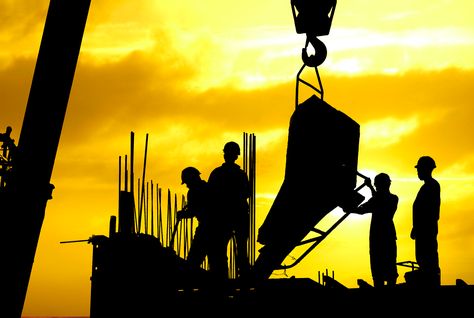On site
The term ‘on site’ (or on-site) typically refers to work which is carried out on the construction site itself. This is as opposed to ‘off-site’ which is generally associated with prefabrication or pre-assembly techniques. For more information see: Offsite construction.
Generally, on-site construction techniques tend to be more labour and time intensive, and they may have lower quality due to the complexities of working in an uncontrolled environment, subject to weather and other changeable conditions, space and access restrictions and so on. However, they can be more flexible in response to changes that may arise on site.
See also: In situ.
Workers on a project may be described as ‘on site’ or ‘off site’.
On site may also refer to the storage of materials. This is as opposed to off site materials, where the client has paid for materials, but they have yet to be delivered to site. The client may do this to ‘reserve’ the items, protecting the programme, but this does put the client at risk, for example if the contractor becomes insolvent and the items are then not delivered, even though payment has been made. For more information see: Off site materials.
On site may also refer to the generation of heat and / or power. Localised, point generation of heat and power provides an independent, responsive, sustainable method of supply. On-site generation can include renewable energy technologies, such as photovoltaics, anaerobic digestion, wind turbines, water turbines, combined heat and power (CHP) and so on. For more information see: On site generation of heat and power.
The feed-in tariff scheme allows consumers who generate their own electricity from a renewable or low-carbon source to qualify for a payment for each unit of electricity generated. Consumers can also qualify for an ‘export tariff’ by selling surplus electricity back to their supplier. For more information see: Feed-in tariff.
The renewable heat incentive (RHI) is similar to the feed in tariff scheme, but is designed to incentivise heat generation. For more information see: Renewable heat incentive.
[edit] Related articles on Designing Buildings Wiki
Featured articles and news
Government consultations for the summer of 2025
A year of Labour, past and present consultations on the environment, the built environment, training and tax.
CMA competitiveness probe of major housing developers
100 million affordable housing contributions committed with further consultation published.
Homes England supports Greencore Homes
42 new build affordable sustainable homes in Oxfordshire.
Zero carbon social housing: unlocking brownfield potential
Seven ZEDpod strategies for brownfield housing success.
CIOB report; a blueprint for SDGs and the built environment
Pairing the Sustainable Development Goals with projects.
Types, tests, standards and fires relating to external cladding
Brief descriptions with an extensive list of fires for review.
Latest Build UK Building Safety Regime explainer published
Key elements in one short, now updated document.
UKGBC launch the UK Climate Resilience Roadmap
First guidance of its kind on direct climate impacts for the built environment and how it can adapt.
CLC Health, Safety and Wellbeing Strategy 2025
Launched by the Minister for Industry to look at fatalities on site, improving mental health and other issues.
One of the most impressive Victorian architects. Book review.
Common Assessment Standard now with building safety
New CAS update now includes mandatory building safety questions.
RTPI leader to become new CIOB Chief Executive Officer
Dr Victoria Hills MRTPI, FICE to take over after Caroline Gumble’s departure.
Social and affordable housing, a long term plan for delivery
The “Delivering a Decade of Renewal for Social and Affordable Housing” strategy sets out future path.
A change to adoptive architecture
Effects of global weather warming on architectural detailing, material choice and human interaction.
The proposed publicly owned and backed subsidiary of Homes England, to facilitate new homes.
How big is the problem and what can we do to mitigate the effects?
Overheating guidance and tools for building designers
A number of cool guides to help with the heat.
The UK's Modern Industrial Strategy: A 10 year plan
Previous consultation criticism, current key elements and general support with some persisting reservations.
Building Safety Regulator reforms
New roles, new staff and a new fast track service pave the way for a single construction regulator.

























